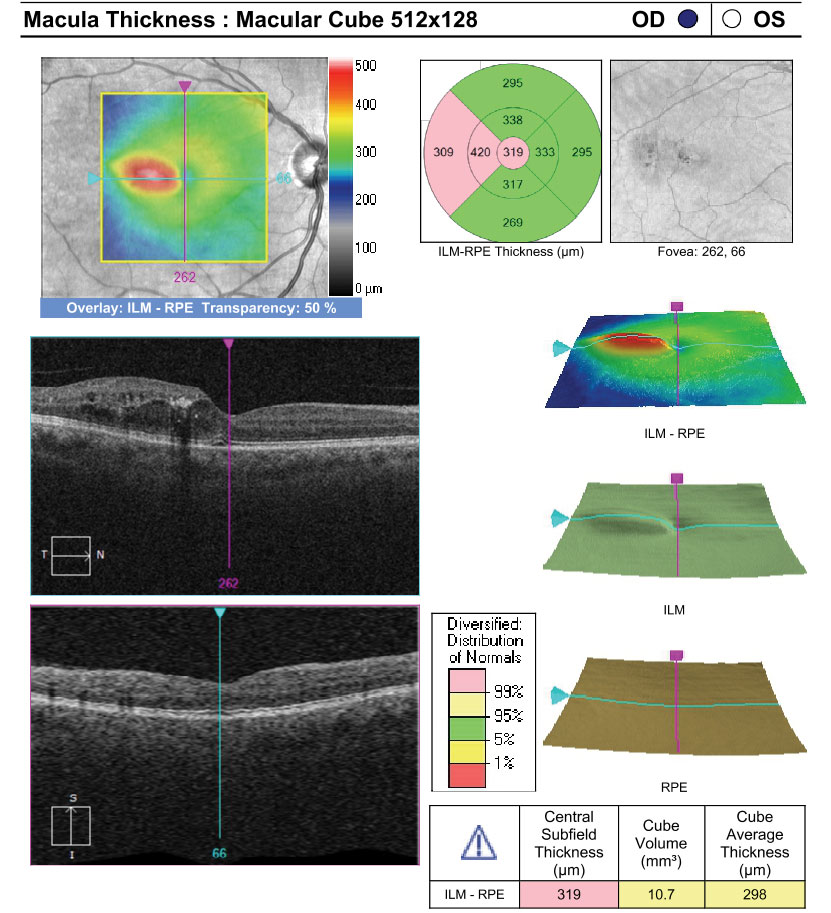 |
| Diagnostic accuracy of DME improved significantly using an all-in-one instrument that took fundus photos and also performed OCT scans. Photo: Anna Bedwell, OD. Click image to enlarge. |
Ocular disease screening programs in primary care settings that rely on fundus photography alone will miss a sizable number of cases of diabetic macular edema (DME), a new study found. By contrast, in a screening program among patients with a diagnosis of diabetes but no pre-existing ocular involvement, the addition of SD-OCT greatly improved accuracy.
Researchers noted that combined detection of macular thickening on OCT and anatomical signs by photography showed the highest suitability for screening, with a sensitivity of 88.3% and a specificity of 99.8%. Notably, photography alone missed half of the true DME cases that lacked indirect signs.
The team conducted a cross-sectional study with all diabetic patients aged ≥18 years who attended screening program from September 2016 to December 2017, assessing DME according to photographic and SD-OCT criteria. The sensitivity and specificity were obtained and compared. This study used a device capable of both OCT scanning and fundus photography, for ease of operator use and to suggest an optimal method for telehealth screening programs,
The study included 3,918 eyes of 1,925 patients (median age, 66 years; females, 40.7%). The prevalence of DME ranged from 1.22% to 1.83% and 1.54% to 8.77% on photography and SD-OCT, respectively. Sensitivity didn’t surpass 50% on fundus photography alone and was even less for the quantitative criteria of SD-OCT. When macular thickening and anatomical signs of DME were considered, sensitivity increased to 88.3%, and the false DMEs and non-gradable images were reduced.
“These improved results [compared with other studies] may be attributable to the highly experienced staff operating the instrument in our program, which has not been the case in other studies,” the investigators concluded in their paper for the journal Retina. “To the best of our knowledge, the present study is the first to test the diagnostic accuracy of DME using an all-in-one instrument by simulating different scenarios using multiple diagnostic criteria and comparing the results with an ad hoc ground truth of DME in a large population extracted from a telemedicine screening program running for several years.”
Arruabarrena C, Rodriguez-Miguel A, Allendes G, et al. Evaluation of the inclusion of spectral-domain optical coherence tomography in a telemedicine diabetic retinopathy screening program: a real clinical practice. Retina. May 4, 2023. [Epub ahead of print]. |


